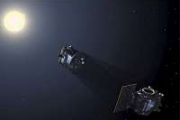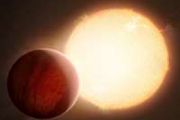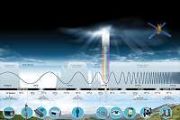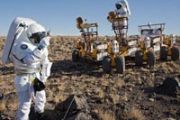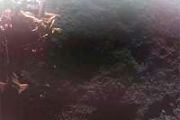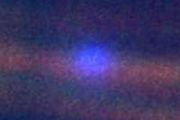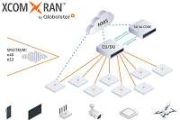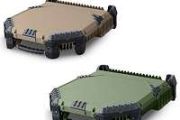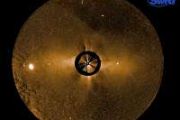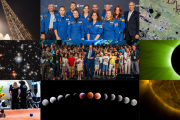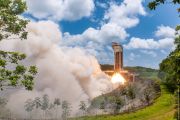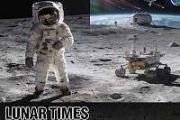
Copernical Team
Smile meets Maxwell
 Image:
Smile meets Maxwell
Image:
Smile meets Maxwell Sierra Space advances secure GPS tech for US Space Force initiative
 Sierra Space has successfully showcased its Resilient GPS (R-GPS) satellite technology, a critical advancement for the U.S. Space Force's efforts to strengthen national defense through more robust navigation systems. Developed in partnership with General Dynamics Mission Systems, the demonstration validated the generation of all necessary GPS navigation signals for the R-GPS mission, addressing
Sierra Space has successfully showcased its Resilient GPS (R-GPS) satellite technology, a critical advancement for the U.S. Space Force's efforts to strengthen national defense through more robust navigation systems. Developed in partnership with General Dynamics Mission Systems, the demonstration validated the generation of all necessary GPS navigation signals for the R-GPS mission, addressing Smartphone sensor array reimagined as ultra-precise antimatter imaging system
 In a major advance for antimatter research, scientists from CERN's AEgIS collaboration have engineered a groundbreaking imaging system by adapting the image sensors found in mobile phone cameras. The innovation aims to provide unprecedented spatial resolution in tracking the annihilation of antihydrogen particles, a vital step toward precisely measuring how antimatter responds to Earth's gravity
In a major advance for antimatter research, scientists from CERN's AEgIS collaboration have engineered a groundbreaking imaging system by adapting the image sensors found in mobile phone cameras. The innovation aims to provide unprecedented spatial resolution in tracking the annihilation of antihydrogen particles, a vital step toward precisely measuring how antimatter responds to Earth's gravity NASA uncovers complex teamwork in magnetic bacteria
 In a breakthrough study, researchers backed by NASA have explored the remarkable cooperative behavior of a rare form of bacteria that function as if they were a unified multicellular entity. These organisms, known as multicellular magnetotactic bacteria (MMB), are the only bacteria currently known to display this specific type of obligate multicellularity, offering a compelling model for how com
In a breakthrough study, researchers backed by NASA have explored the remarkable cooperative behavior of a rare form of bacteria that function as if they were a unified multicellular entity. These organisms, known as multicellular magnetotactic bacteria (MMB), are the only bacteria currently known to display this specific type of obligate multicellularity, offering a compelling model for how com Mammals were shifting to ground life long before dinosaur extinction
 New findings from the University of Bristol suggest that mammals had begun transitioning from arboreal habitats to terrestrial ones several million years prior to the asteroid strike that caused the extinction of the dinosaurs.
Published in the journal Palaeontology, the research highlights that numerous mammalian species were already adapting to life on the ground before the catastrophic
New findings from the University of Bristol suggest that mammals had begun transitioning from arboreal habitats to terrestrial ones several million years prior to the asteroid strike that caused the extinction of the dinosaurs.
Published in the journal Palaeontology, the research highlights that numerous mammalian species were already adapting to life on the ground before the catastrophic A new path for quantum connections
 Applied physicists at the Harvard John A. Paulson School of Engineering and Applied Sciences (SEAS) have developed a photon-routing device that could significantly enhance the interface between optical and microwave quantum systems, potentially enabling large-scale, modular quantum computing over existing telecom networks.
This innovation could pave the way for quantum computers that are n
Applied physicists at the Harvard John A. Paulson School of Engineering and Applied Sciences (SEAS) have developed a photon-routing device that could significantly enhance the interface between optical and microwave quantum systems, potentially enabling large-scale, modular quantum computing over existing telecom networks.
This innovation could pave the way for quantum computers that are n Carbon Robotics debuts autonomous tractor system with live remote control capability
 Carbon Robotics has unveiled Carbon AutoTractor, a new autonomy system that transforms conventional tractors into driverless machines, monitored and managed in real time by trained human operators. Built around the Carbon AI platform, the solution is designed to deliver continuous, dependable autonomous operations for farms seeking to scale up productivity and address labor shortages.
This
Carbon Robotics has unveiled Carbon AutoTractor, a new autonomy system that transforms conventional tractors into driverless machines, monitored and managed in real time by trained human operators. Built around the Carbon AI platform, the solution is designed to deliver continuous, dependable autonomous operations for farms seeking to scale up productivity and address labor shortages.
This Karman expands spacecraft production with advanced clean room facility
 Karman Space and Defense (NYSE: KRMN), a prominent provider of precision-engineered systems for missiles, uncrewed aerial vehicles, and spacecraft, has unveiled a new ISO 8 clean room facility at its Washington site. This state-of-the-art space is purpose-built to handle the assembly and integration of next-generation space hardware, including lunar landers, satellite platforms, and habitat modu
Karman Space and Defense (NYSE: KRMN), a prominent provider of precision-engineered systems for missiles, uncrewed aerial vehicles, and spacecraft, has unveiled a new ISO 8 clean room facility at its Washington site. This state-of-the-art space is purpose-built to handle the assembly and integration of next-generation space hardware, including lunar landers, satellite platforms, and habitat modu Honda to test renewable tech in space soon
 Honda will partner with US companies to test in orbit a renewable energy technology it hopes to one day deploy on the Moon's surface, the Japanese carmaker announced Friday.
The auto giant is developing a mechanism capable of generating electricity and oxygen continuously - enabling astronauts to breathe - thanks to solar energy and water known to be present in some lunar soils.
Now i
Honda will partner with US companies to test in orbit a renewable energy technology it hopes to one day deploy on the Moon's surface, the Japanese carmaker announced Friday.
The auto giant is developing a mechanism capable of generating electricity and oxygen continuously - enabling astronauts to breathe - thanks to solar energy and water known to be present in some lunar soils.
Now i New geointelligence tool streamlines land mapping and resource planning
 Researchers at the Tupa campus of Sao Paulo State University (UNESP) have introduced a new geospatial intelligence method designed to improve the speed and precision of land use monitoring and territorial planning. The approach successfully delineates key landscape features, such as Amazon rainforest, Cerrado vegetation, pastures, and areas of intensive agriculture with double-cropping systems.
Researchers at the Tupa campus of Sao Paulo State University (UNESP) have introduced a new geospatial intelligence method designed to improve the speed and precision of land use monitoring and territorial planning. The approach successfully delineates key landscape features, such as Amazon rainforest, Cerrado vegetation, pastures, and areas of intensive agriculture with double-cropping systems. 







